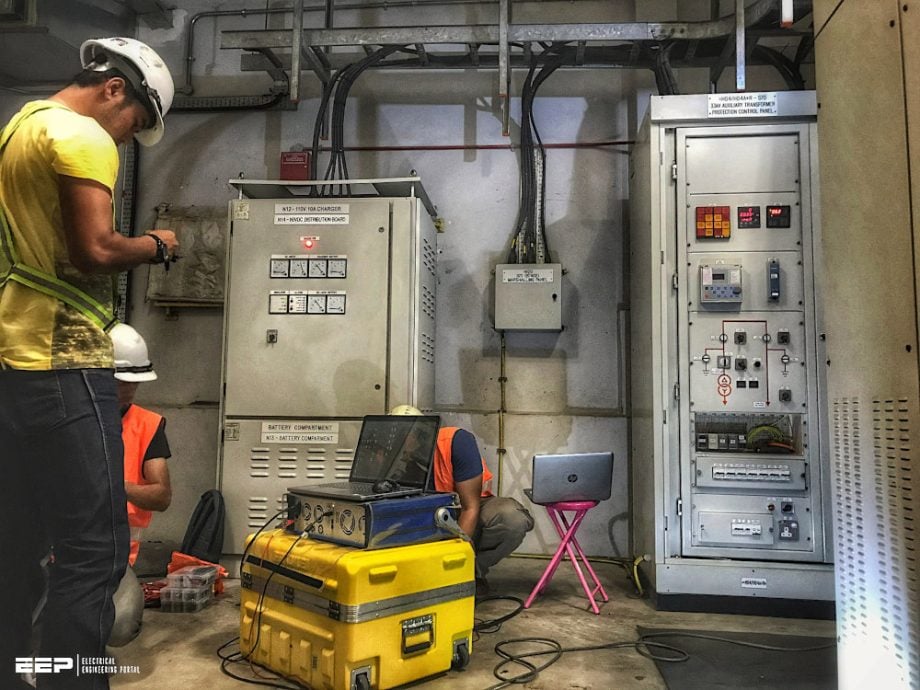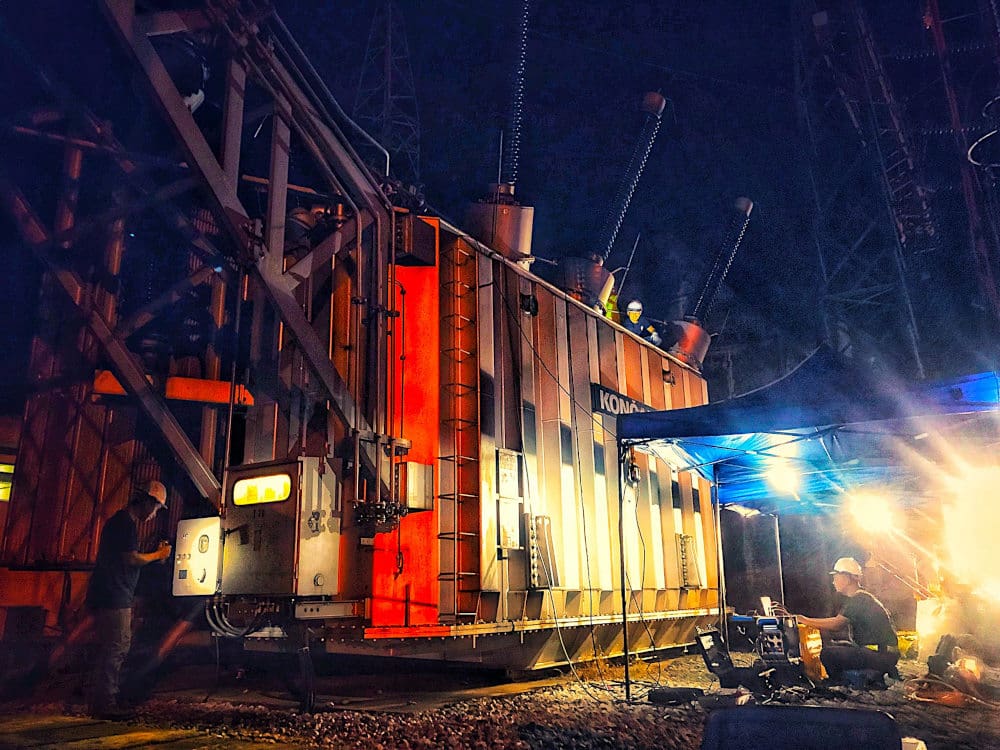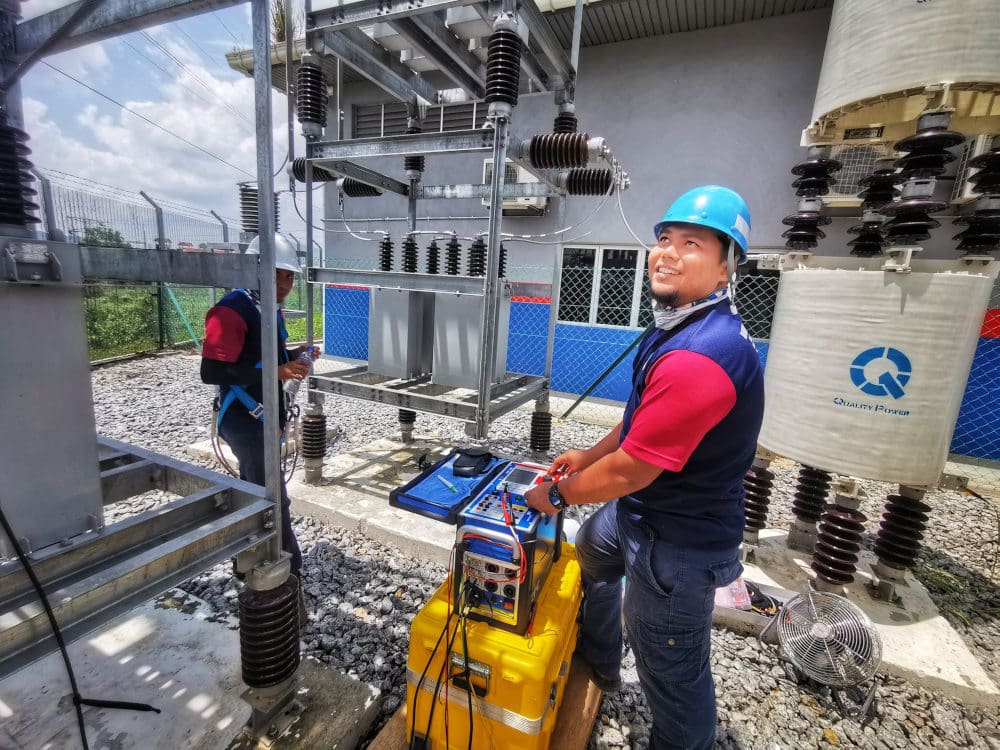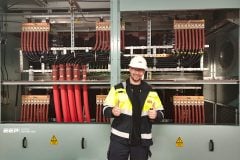The art of testing and commissioning
The objective of the site inspection and test plan for testing and commissioning is to establish a comprehensive framework for conducting site testing and commissioning activities. It’s as simple as that! The site testing and commissioning of a transmission or distribution plant are the final procedures conducted to verify the proper functioning of the plant and its compliance with stated specifications.

Typically, the equipment undergoes factory testing, and it is the responsibility of the commissioning engineers to ensure proper assembly and installation of the equipment. The primary goals of the site inspection and test plan for testing and commissioning are:
The goal number one is verification of the proper installation of the specified equipment. Second goal is the confirmation of the correct functioning of the equipment and absence of damage during shipment or installation. The third goal would be to ensure that the desired operations/functions are achieved with the selected design.
Prior to conducting testing and commissioning, it is essential that the test procedures and records have been approved by the client and that the commissioning engineer possesses the appropriate mindset to carry out the tasks in a systematic and professional manner.
Ok, let’s get into the details!
- Personnel and Responsibilities
- Safety and potential acidents:
- Requirements for the Health & Safety Checklist
- Electric shock (have your eyes on the back)
- Working method and tension (nervousness and mistakes)
- Customer’s and third party personnel
- Work and operational verifications (safety guarantees):
- Operational responsibility
- Disconnection, temporary safety earthing:
- Measuring equipment and tools:
- Induced voltages (invisible danger)
- Current transformers (know how to handle them)
- Voltage transformers (can be damaged)
- Power capacitors and high voltage cables
- Low voltage switchgear
- Batteries
- Convertor
- Fuses
- Electrically operated equipment
- BONUS (PDF) 🔗 Download Substation Test and Commissioning Manual
1. Personnel and Responsibilities
Commissioning Coordinator:
A Commissioning Coordinator is tasked with coordinating all activities associated with testing and commissioning, as well as executing the site inspection and test plan for these processes.
Testing and Commissioning Engineer:
A Testing and Commissioning Engineer is accountable for conducting tests and commissioning equipment, while ensuring adherence to the appropriate processes. After finishing all of the tests, he will sign the corresponding test record and ask any witnessing representative to do the same.
The Testing and Commissioning Engineer is accountable for the following:
The Commissioning Officer will prepare a Commissioning Staging Plan during the project development period.
The Commissioning Staging Plan is a comprehensive document that outlines the intended commissioning staging in a broad and sweeping manner.
The Commissioning Officer is accountable for the creation of a Commissioning Outage Plan. This plan will outline the specific plant and system outages needed to successfully carry out the scheduled commissioning stages of the project.
During the construction of the outage plan, it is necessary to have close contact with the Project Leadership Team to effectively manage network risks during commissioning.
Figure 1 – Testing and commissioning engineers in action of testing power transformer at night


Another responsibility of Commissioning Engineer is to create Inspection and Test Plans and Test Reports. These documents serve as quality control measures and outline the specific testing requirements for primary plant and secondary systems.
The designated Commissioning Engineer will have the responsibility of creating the Inspection and Test Plans and Test Reports for every commissioning stage throughout the initial phase of project implementation.
2. Safety and potential acidents
From the safety point of view, the testing and commissioning of distribution and transmission plants is often done under hazardous conditions. The risk of accidents must always be taken into consideration and the testing and commissioning personnel have to be fully aware of the dangers that exist and should know how to conduct their work to avoid such hazards.
2.1 Requirements for the Health & Safety Checklist
The manufacturer’s supervisor is required to conduct a comprehensive assessment of the health and safety conditions in the work area. Consequently, he completes the health and safety checklist for installation. In cases when shortcomings are identified, it is necessary to complete the comprehensive checklist.
Unless any faults are found, it is not necessary to complete the full checklists.
2.2 Electric shock
Undoubtedly, the most significant hazard linked to the testing and commissioning of electric plant is the possibility of electric shock. Electric shock accidents are particularly unique since the individuals involved rarely receive any advance notice, as the risk cannot be detected by human senses.
The Five-Safety Roules:
- Disconnecting
- Securing against reclosing
- Testing for absence of voltage
- Earthing and short-circuiting
- Covering or fencing off adjacent live parts
Figure 2 – Engineer performing testing of HV capacitor banks


2.3 Working method and tension
(Nervousness and mistakes)
The testing and commissioning of a plant frequently needs to be completed within a tight timeframe and involves multiple individuals from various companies. Testing and commissioning professionals must consider two possible causes of accidents:
- High-pressure scenarios that require immediate action rather than systematic deliberation.
- A tense scenario arises during the energizing phase, particularly when one partner is uninformed of the actions being taken by the other.
The testing and commissioning people should always avoid being swayed by client expectations, economic pressure, or any other factors that could compromise the safety of the personnel.
During the energizing sequence, it is necessary for all communication between the individual in question and manufacturer’s testing and commissioning professionals to be conducted exclusively through a single person, namely the chief commissioning engineer. This measure is implemented to avoid any potentially deadly misunderstandings.
The manufacturer’s chief commissioning engineer will provide instructions on how to take measurements and perform necessary fault-finding procedures in electrified equipment. This is done to reduce the danger of mishaps that may occur when there is uncertainty about responsibilities.










